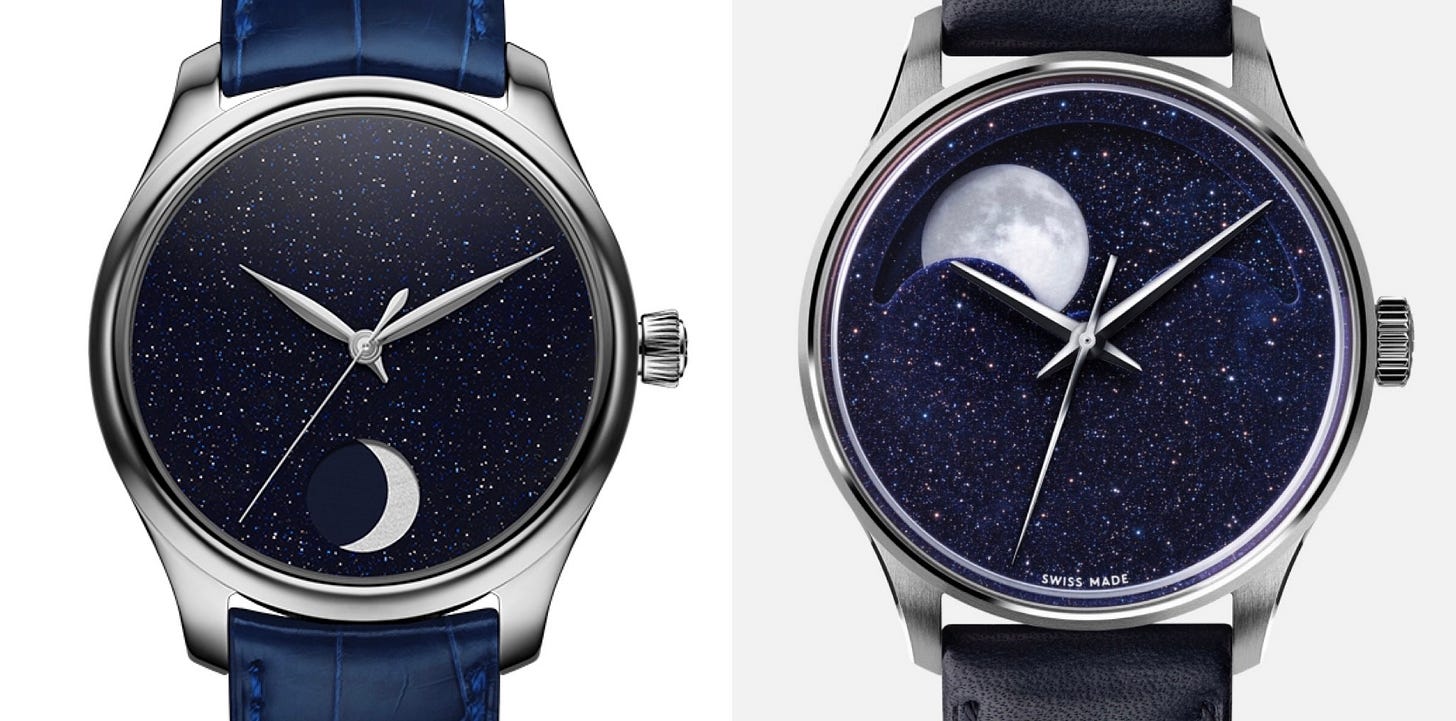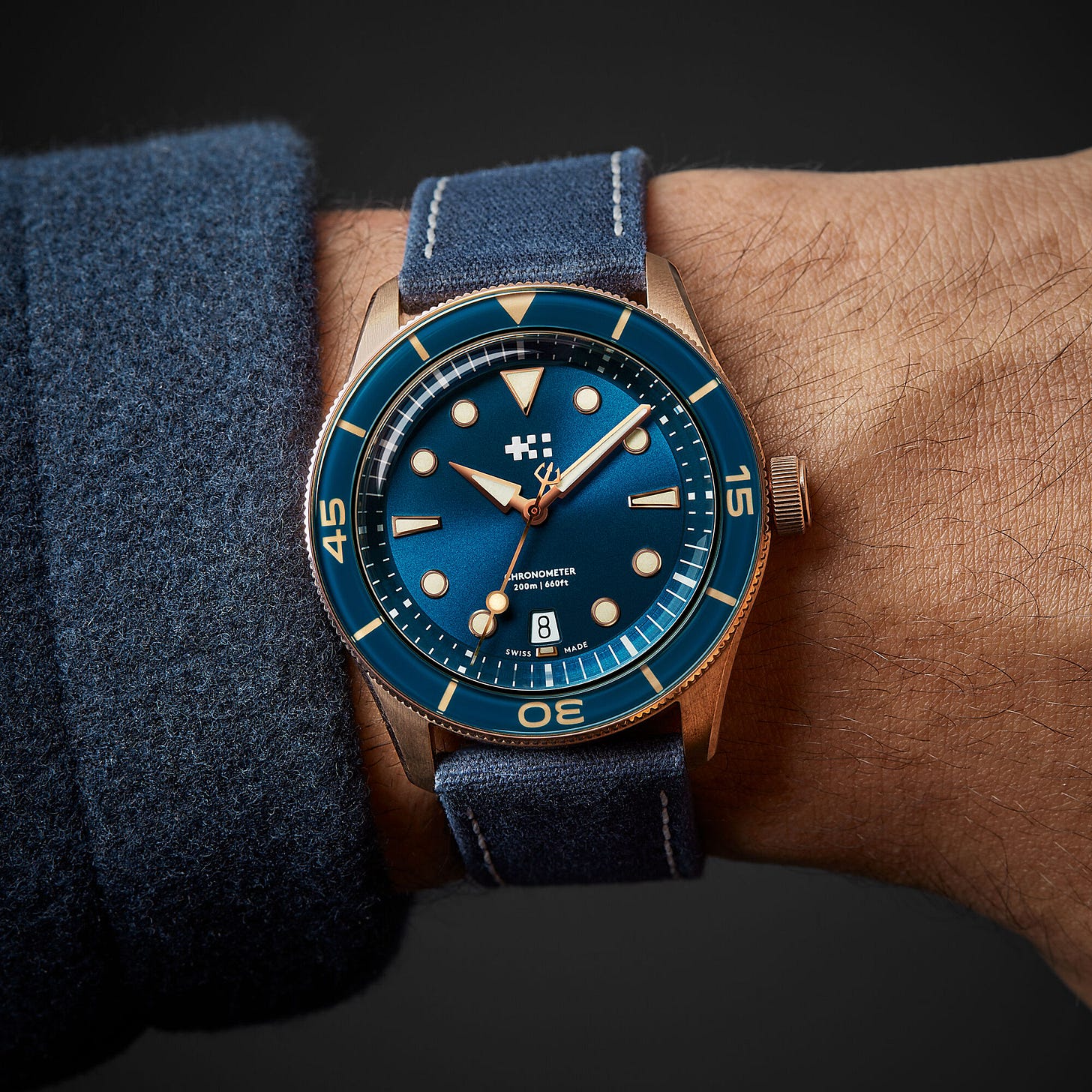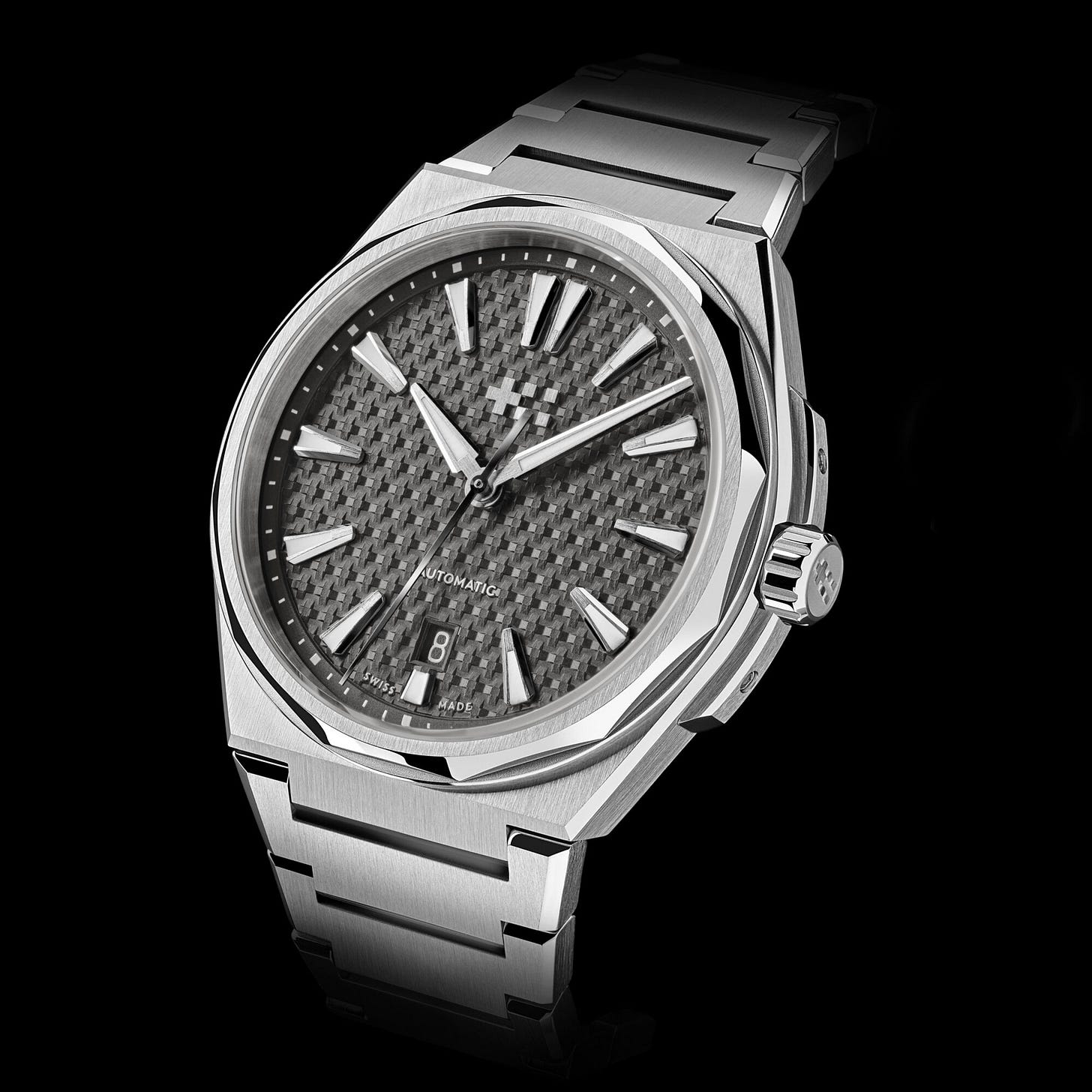Christopher Ward: is it about to divide to conquer?
I think I’ve figured out what they're up to with their brand. If I'm right, we should all be very excited
Hello again 👋 Shall we do something a bit different? Yes, let’s… Still watch-related. But a bit of fun industry guess-work.
For those who don’t know me, by day I’m a brand strategist. I help to build all kinds of brands, from ambitious start-ups to global names. That means I’m always curious about watch brands and what they’re up to. Its the overlap in the Venn diagram between my hobby and my work.
With all that in mind, I think I’ve figured something out. But I don’t know if it’s right. It’s about Christopher Ward and what their future might look like - and I’d like to hear what others think. So let’s cut the preamble and dive in…
It’s been a week of Big Watch News, so you might not have seen what Christopher Ward did yesterday. If you didn’t, have a look and this, then we’ll carry on…

Where do we start? It’s an absolute beauty. Aventurine dial with a large luminescent moonphase, based around their JJ04 movement. More elegant and understated than we’ve seen before, with exceptional finishing for the money. It’s yet more proof that something big is going on in Maidenhead. But before I get into that, let’s take stock…
From upstart to firestarter
If you’d asked me a few years ago what I thought the Christopher Ward brand stood for, I’d have said it was simply about value. After the first decade or so of pioneering the direct-to-consumer watch market and finding their feet, Christopher Ward carved out a niche delivering great quality watches for a very reasonable price. Nothing about the designs necessarily set me on fire, but they were all very good watches for the money you paid. And the pricing was honest: I’ve heard their CEO, Mike France, say that the commercial model is a “multiple of three” - i.e. what you pay is three times what it costs them to make. Very clear. Very fair.
But then the upstart grew up. And things started to change. Over time, they started to introduce models with more flair and refinement - like their Supercompressors and the Aquitaine range. It all felt more unique and proprietary. Introducing a new “twin flags” logo added to this renewed sense of identity - a herald of change. A signal that they were now a brand with confidence and their own ideas.
What didn’t change was the honest pricing and frankly remarkable quality for what you paid. These seemed like core values.
Where things started to get really interesting was with the introduction of the Bel Canto. We all know about this one by now. It set the watch world alight - and showed a new level of swagger and confidence. A leap closer to truly unique design and haute horology - for about £3,000. (If you’re not a watch nerd, £3,000 is a decent chunk of change, but remarkable value for what they were delivering.)

It was at this point we all started asking the question, “what are they up to?”
On the surface of it, it appeared they were a bit schizophrenic. On the one hand, excellent value everyday watches. On the other, ambitious high-end horology.
Then, like an impatient dad at a barbecue, they threw petrol onto the flames with The Twelve (reviewed there by the charming Andrew Morgan). This week’s launch of the C1 Moonphase makes sure the charcoal is still alight in case anyone still fancies a sausage.
Just what’s going on?
I’ve been doing some thinking. And I think I’ve figured it out.
One brand or two?
Let’s look at the evidence. What we have today seems like a brand with two levels. At one level, amazing value pieces. At the other, high-end prowess. But all living together under one family, based around shared values of exceptional quality and baffling pricing for what you get.
While the two levels undoubtedly share those common values, I think we’re starting to see the emergence of a new brand system. Perhaps even two brands, at two price points.
You might be thinking that this sounds a bit like the original Rolex and Tudor idea. But I don’t think that’s the right analogy. That was Hans Wilsdorf offering a more accessible (Tudor) version of a higher end (Rolex) product. Essentially cosmetically similar products, but with lower-end movements that allowed them to shave money off the price tag.
This isn’t that. It’s not the case that Christopher Ward’s lower-priced watches are slightly less good versions of the high-end pieces. There’s not a Bel Canto Pro and a Bel Canto Light. Or a Sealander and a Super Sealander.
No. It’s not the Rolex-Tudor model. To figure it out, I think we need to travel to the Far East…
Grand Designs
Let me take you to Japan.
It’s the 1960s and Seiko is fed up. All they’re hearing is that ‘the Swiss make the best watches’. They don’t think that’s true. They know what Japanese watchmakers are capable of. So they create two new divisions - King Seiko and Grand Seiko - and tell them to go off and compete against each other to build the best watches possible.
The rest, as they say, is history. Grand Seiko won and grew into the brand we know today, making some of the finest watches in the world. It showed that Japan was a genuine contender in the world of high horology - and created a gleaming, Zaratsu-polished halo effect for Seiko.
The bigger picture for the Seiko Corporation was that they were able to build a tiered brand hierarchy. They could now appeal to different buyers with different budgets using different brands. Seiko for good, honest watches at a good, honest price. Grand Seiko for fine, high-end watchmaking at a higher (but still reasonable) cost. In truth, the brand family is actually a bit more complicated, not least because of Credor sitting above Grand Seiko, and King Seiko making a recent comeback. But to all intents and purposes, the system is simple. It segments the market into different levels and offers something for everyone, based on the shared idea of the best watch for the money you pay. And all their brands enjoy the prestige that comes from Grand Seiko’s reputation.
Sound familiar?
I reckon this is where Christopher Ward is heading. Their amazing value pieces are their version of the Seiko brand - a very good product for a very good price. (I’d actually argue that Christopher Ward achieves far more than Seiko in terms of quality, design and innovation - and has a much cleaner and more streamlined offering. But the analogy still works.)
At the other end, their high-end pieces are where they go to show off - like Grand Seiko. I have an image in my head of Mike France tasking design genius Will Brackfield and team to show off what they’re capable of - a bit like the Grand Seiko-vs-King Seiko battle royale. But without the competition element.
And it’s working. What we’re starting to see with pieces like the Bel Canto and the C1 Moonphase is a more ambitious level of design and watchmaking.
It also reminds me of Grand Seiko because of the price point, relative to its competitive set. I’ve heard watch experts (and Kevin O’Leary) talk about Grand Seiko as “Patek level at a tenth of the price”. Whether or not you agree with that, it’s certainly true that the finishing and watchmaking punches several levels above its weight.
If we look at Christopher Ward, they’re starting to do the same. The Twelve has had reviewers scratching their heads at how other brands get away with charging multiple times more for similar levels of build quality and design. The Bel Canto does the same, offering the kind of complication you’d usually pay a million more moneys for. And I believe the C1 Moonphase could easily pass for a Moser if you took the logo off the crown (and perhaps squinted a bit). The fact that Christopher Ward shares some production facilities and suppliers with certain well-known, higher-end brands suggests this comparison isn’t entirely fanciful.

It’s worth pointing out that I’m not saying their high-end pieces are quite yet at the level of Grand Seiko in quality or finish. But that’s just a matter of time.
So, what next for the brand?
If what I’ve said is right, we’ll probably see the brand getting a bit of a tweak in the coming years.
Specifically, I wouldn’t be surprised if the next couple of years brought a new brand structure for the Masters of Maidenhead. A structure where Christopher Ward pieces are the “standard” level. And where a new, emergent Grand Christopher Ward (you can tell I’m a brand expert, right!?) are the ‘high end’ ambitious pieces. It would allow them to operate at two levels, pushing the high-end stuff even higher, while staying true to their core family values of “the maximum watch for your money”. As buyers, we’d all understand the system. And the whole family would enjoy the halo effect.
If I were defining their brand strategy for the next 20-30 years, that’s certainly a hint of what would be in my frighteningly expensive PowerPoint deck. But given that Mike France is a bit of a business genius* and has an incredible team around him, not only would they not need my advice - they’ve probably mapped out something much more ambitious already.
It’s now for us to just sit back and enjoy the ride. And watch them make the rest of the industry collectively shit itself.
* For those in the UK, you remember The Early Learning Centre, right? That was one of his previous successes…





You’ve hit the nail on the head mate. Great read!
I'm excited about where Christopher Ward is heading, too. I bought my first Christopher Ward watch in 2015 for $695 USD, the Trident Pro 600. I adore my CW Moonglow C1 (best moon of any moon phase I have). I may skip the Bel Canto, because what comes next will be even more amazing.